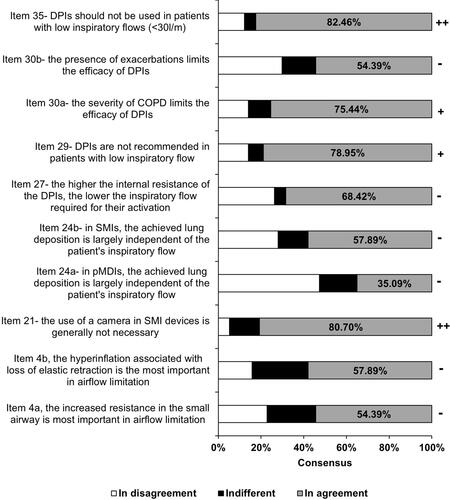Figures & data
Figure 1 Expert consensus on the identification of patient factors, related to inspiratory flow and lung deposition, to be considered in inhaled therapy. A high level of consensus was reached in all items but in item 4, perhaps because it is an issue with complex pathophysiological implications. Consensus degree is shown as: ++(strong consensus, >80% of the experts agreed) and - (discrepancy, <70% agreed).
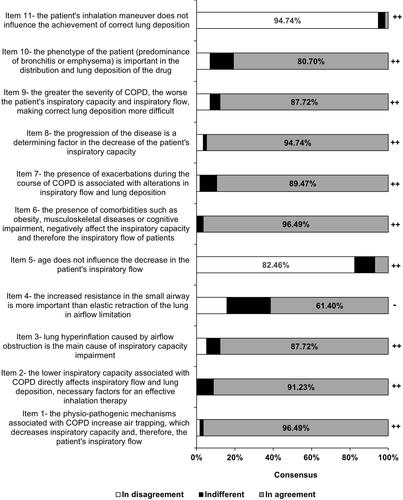
Figure 2 Expert consensus on the identification of the characteristics of the different inhalation devices related to inspiratory flow and lung deposition in inhaled therapy. The percentage of agreement among the experts is indicated. The panel reached strong consensus in all of these items. Consensus degree is shown as: ++(strong consensus, >80% of the expert panelists agreed).
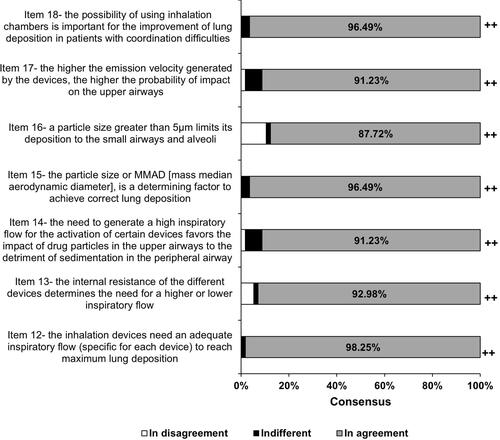
Figure 3 Expert consensus on the relationship between the characteristics of the different inhalation devices (DPI, pMDI and SMI). The percentage of agreement among the experts is indicated. Aspects related to the characteristics of the devices produced the greatest disagreement. The concepts of intrinsic resistance and inspiratory flow are likely to lead to some confusion even among expert pulmonologists. Consensus degree is shown as: +++(unanimity, 100% of the experts agreed); ++(strong consensus, >80% of the panelists agreed); +(weak consensus, <80% and >70% agreed); and - (discrepancy, <70% agreed).
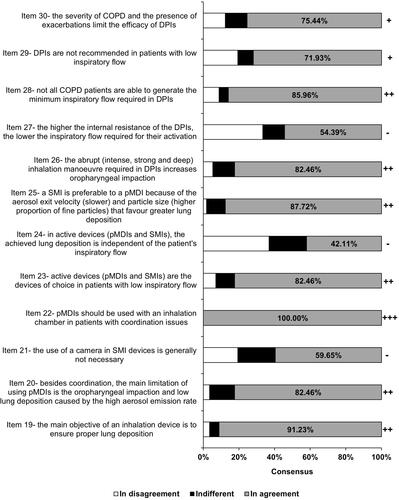
Figure 4 Expert consensus on recommended guidelines for the choice and use of inhaler devices in clinical practice with respect to inspiratory flow and lung deposition in inhaled therapy. The percentage of agreement among the experts is indicated. The most clinical-related issues reached strong agreement. Consensus degree is shown as: +++(unanimity, 100% of the experts agreed); ++(strong consensus, >80% agreed); and +(weak consensus, <80% and >70% agreed).
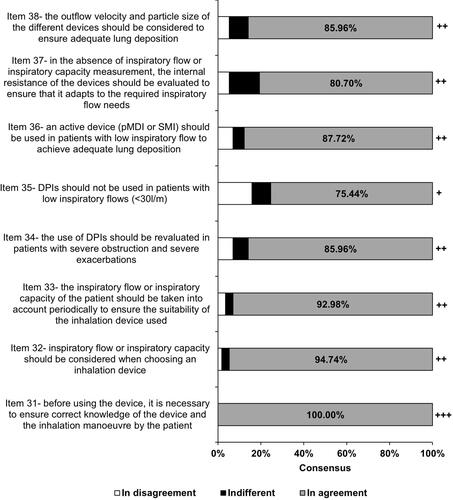
Figure 5 Expert consensus in the second round of the Delphi panel. In the second round, the issues related to the devices continued to maintain some discrepancies. Consensus degree is shown as: ++(strong consensus, >80% of the experts agreed); +(weak consensus, <80% and >70% agreed); and - (discrepancy, <70% agreed).
